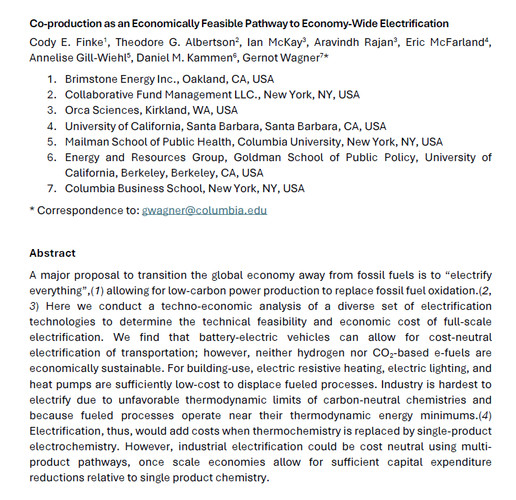Underwriting 1.5°C: competitive approaches to financing accelerated climate change mitigation
by Paul Bodnar, Caroline Ott, Rupert Edwards, Stephan Hoch, Emily F. McGlynn & Gernot Wagner
Abstract:
Delivering emission reductions consistent with a 1.5°C trajectory will require innovative public financial instruments designed to mobilize trillions of dollars of low-carbon private investment. Traditional public subsidy instruments such as grants and concessional loans, while critical to supporting nascent technologies or high-capital-cost projects, do not provide the price signals required to shift private investments towards low-carbon alternatives at a scale. Programmes that underwrite the value of emission reductions using auctioned price floors provide price certainty over long time horizons, thus improving the cost-effectiveness of limited public funds while also catalysing private investment.
Taking lessons from the World Bank’s Pilot Auction Facility, which supports methane and nitrous oxide mitigation projects, and the United Kingdom’s Contracts for Difference programme, which supports renewable energy deployment, we show that auctioned price floors can be applied to a variety of sectors with greater efficiency and scalability than traditional subsidy instruments. We explore how this new class of instrument can enhance the cost-effectiveness of carbon pricing and complementary policies needed to achieve a 1.5°C outcome, including through large-scale adoption by the Green Climate Fund and other international and domestic climate finance vehicles.
Full text: "Underwriting 1.5°C: competitive approaches to financing accelerated climate change mitigation" (published online: 4 December 2017)
Related:
Ghosh, Arunabha, Benito Müller, William Pizer, and Gernot Wagner. "Mobilizing the Private Sector: Quantity-Performance Instruments for Public Climate Funds." Oxford Institute for Energy Studies (Oxford Energy and Environment Brief, 2012); credited with seeding idea for concept behind Environmental Finance’s Carbon Deal of the Year 2016.


